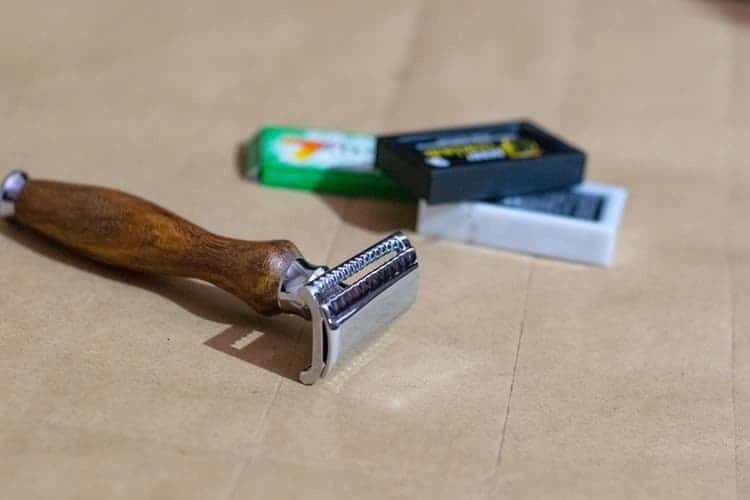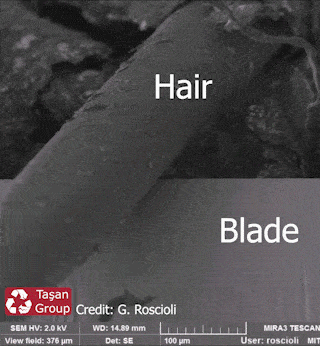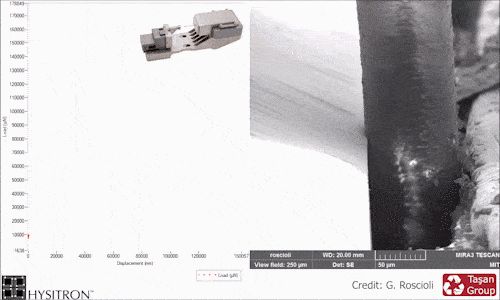Shaving technology has progressed quite a bit in the past few decades, but one thing has remained annoyingly constant over time: the fact that blades get dull with use.

Human hair is 50 times softer than the blade itself — so it doesn’t seem like it would be too much of a challenge to cut through. At first, it’s not. New blades (at least the quality ones) get the job done easily. But if you use them again (and again and again), they tend to get dull.
Many shaving razors (especially the small ones) also can’t be sharpened. Knives, for comparison, can be sharpened and last for many years, but blades need to be replaced quickly. To see why this happens, a team of MIT engineers looked at this interaction in unprecedented detail.
“Our main goal was to understand a problem that more or less everyone is aware of: why blades become useless when they interact with much softer material,” says C. Cem Tasan, the Thomas B. King Associate Professor of Metallurgy at MIT. “We found the main ingredients of failure, which enabled us to determine a new processing path to make blades that can last longer.”
Tasan is a specialist. His work focuses on exploring the microstructure of metals and see what can be changed to make them more resilient in time.
“We are metallurgists and want to learn what governs the deformation of metals, so that we can make better metals,” Tasan says. “In this case, it was intriguing that, if you cut something very soft, like human hair, with something very hard, like steel, the hard material would fail.”
He found that when it comes to shaving blades, the blade doesn’t technically get dull. Whether it’s single-blade, multi-blade, or safety razors, the blade is still sharp. What happens is that it tends to develop tiny chips. If you’ve ever shaved with a blade that had chips, the odds are you would have felt it pinching at some of your hairs. But researchers weren’t exactly sure why this happened.
To make matters even more puzzling, the chips were showing up in the same places on different blades.

“This created another mystery: We saw chipping, but didn’t see chipping everywhere, only in certain locations,” Tasan says. “And we wanted to understand, under what conditions does this chipping take place, and what are the ingredients of failure?”
To solve the puzzle, Gianluca Roscioli, lead author and MIT graduate student, set up a system to carry out controlled shaving experiments. The device consisted of a movable stage with two clamps: one that held the razor blade and the other that anchored the strands of hair. They then shaved strands of hair of different thicknesses and held at various angles, observing the process with an electron microscope. Roscioli used his own hair, as well as hair sampled from several of his labmates, to ensure that he was representing a wide range of hair diameters. The process looked like this:
The team observed the same thing, regardless of the hair thickness: hair caused the blade’s edge to chip, but only in certain spots. Then, after the first chip forms, cracks accumulate around it, and further chipping quickly appears.

But they also started to see other patterns. For instance, chips didn’t seem to occur when the hair was perpendicular to the blade. But when the razor could shift and bend, chips were more likely to occur, especially on the edge of the blade. The team carried out computer simulations which predicted that failure is dependent on the angle. The models showed that the composition of the blade’s steel was also important, with heterogeneous blades more likely to chip.
The mechanism producing the chips is called stress intensification. When you shave, some stress is applied to the blade — and if there are microcracks or inhomogeneities, it’s more likely to crack.
“Our simulations explain how heterogeneity in a material can increase the stress on that material, so that a crack can grow, even though the stress is imposed by a soft material like hair,” Tasan says.
So if you want your blade to last longer, reduce its heterogeneity while maintaining its hardness — and if possible, try to shave perpendicular to the strands of hair.
The study was published in Science.


